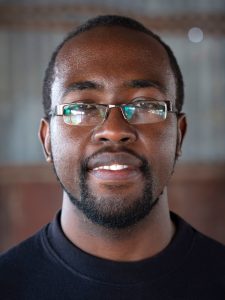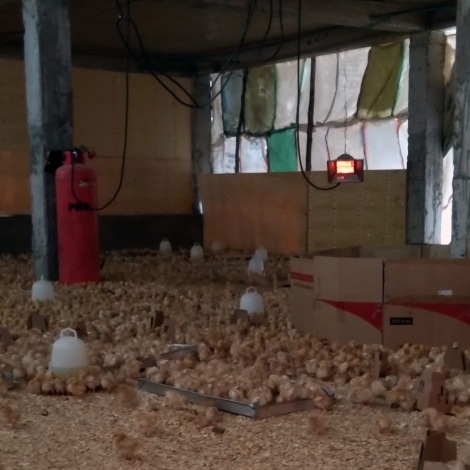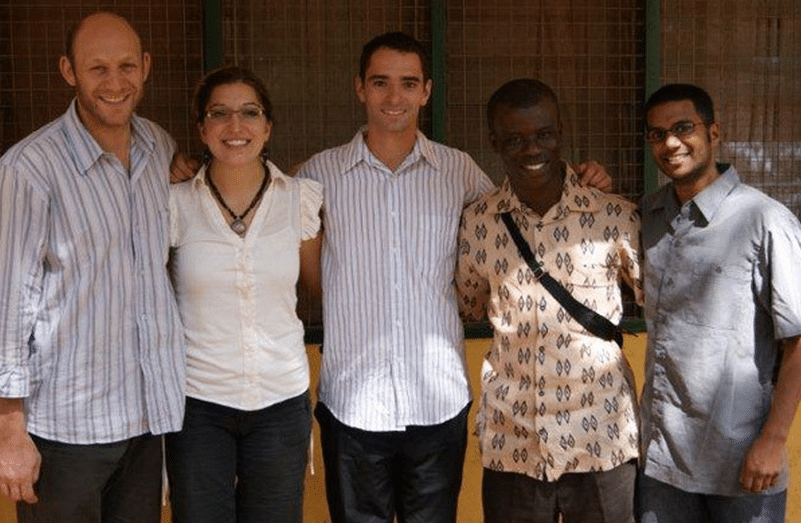 George Chege is bringing Kenyan chicken farms into the digital age, deploying sensors, heat bulbs and SMS to streamline operations. Kenyan poultry farmers have traditionally heated their chick brooders with charcoal-burning jikos. The heaters may be ceramic pots perforated to allow the heat to escape. Or, in a pinch, a cylinder of sheet metal.
George Chege is bringing Kenyan chicken farms into the digital age, deploying sensors, heat bulbs and SMS to streamline operations. Kenyan poultry farmers have traditionally heated their chick brooders with charcoal-burning jikos. The heaters may be ceramic pots perforated to allow the heat to escape. Or, in a pinch, a cylinder of sheet metal.
Chicks thrive in a specific temperature range. In their first week, chicks need an ambient temperature of about 95°F (35°C), decreasing by about 5°F (2°C) each week thereafter. To regulate temperatures in a low-tech brooder, farmers may watch the chicks’ behavior, noting where they gather. If they cluster around the heater, it might be too cold, but if they press against the edges of the enclosure, the temperature may be too hot. Vigilance is important to prevent as many deaths as possible among the chicks. Those types of considerations can make for sleepless nights.
See the Smart Brooder in E4C’s Solutions Library
But Mr. Chege would like to relieve some of that anxiety with an upgrade to the traditional brooder. The Smart Brooder, by Mr. Chege’s startup Arinifu Technologies, removes guesswork from poultry farming. With sensors and a scientific knowledge of optimal conditions for each phase of a chick’s development, the Smart Brooder can nudge farmers to action when needed and keep them up to date on the state of their brooders through messages sent to their phones. The system can control infrared and gas heat lamps, which are more energy efficient than charcoal heaters. High-tech brooders save energy, reduce mortality among the chicks and save on food expenses. And Mr. Chege has data to show that it works.
Arinifu’s Smart Brooder caught the attention of judges in the Kenyan arm of the American Society of Mechanical Engineers (ASME) Innovation Showcase (ISHOW), which Arinifu won in 2018. ISHOW is an international accelerator of innovators that have made physical products, as opposed to software or words, that meet basic needs among underserved communities. Each year, ISHOW awards teams in at events in India, Kenya and the United States. (And ASME is the umbrella organization over Engineering for Change).
In a collaboration with the Lemelson Foundation, one of the sponsors of ISHOW, we’re taking a new look at ISHOW winners to learn about their innovations and their progress to date. We asked George Chege five questions.
E4C: For those of use who are unfamiliar with chick brooders, would you explain more about the problem the Smart Brooder solves?
GC: Heat is more important to a chick during its first few days, more so than food. This is because their thermo-regulatory system is not well developed. This stage is known as the brooding stage. Chicks attain thermo-regulation at around 2 weeks of age when their feathers cover most of their body. In most Sub Saharan Africa, farmers still rely on charcoal stoves for heating. This is the most widely used form of heating and remember, the stoves have to be on throughout, day and night, at least for the 1st 3 days of the chicks life, with the heating hours reducing as they age and grow feathers.
E4C: How would you measure your progress since winning ISHOW in 2018?
GC: Since ISHOW, we have a total of 209 farms using our products with a 40/60 split between those using the high-tech automated solutions and others opting for semi-automatic solutions to their chick brooding needs.
Currently, we sell mostly online through our website to peri-urban farmers, though we are getting to a point where we can sell them as an off-the-shelf product with the integration of global IoT SIM cards. We are open to any deliberations with any agricultural stockiest who may read this article.
We plan to partner with poultry industry players in different parts of the world to distribute the product in their regions. We are currently testing and rolling out a software platform to further assist farmers with farm management and enable faster spread of the work we are doing. To scale out of Kenya we need impact investors who believe in empowering farmers to support us financially and with experiences from other dealings with Ag-tech.
ISHOW was the first validation of our work. It not only gave us belief that we were solving a problem, but a problem that was being faced globally. They provided us with engineering expertise in Failure modes analysis and how to mitigate the various technical failures that existed in the prototyping phase, to helping with design of the final product including it’s packaging. The grant we received assisted in manufacturing the first production run and providing running capital for the business.
E4C: What sets Smart Brooder apart from the competition?
GC: We are highly competing with Charcoal vendors in Sub Saharan Africa since this is what we are replacing. However, in other parts of the world we are competing with products as Huabo and other poultry house environmental controllers from huge companies such as Big Dutchman and Chore Time.
We are geared towards small and medium holder poultry farmers. This is a segment which is greatly underserved by other big players in the industry and we hope to target this market across the world. This means, we reduce the feature set since these farms are not as big while at the same time ensuring quality is not compromised. Our products are also highly automated, requiring the use of only 2 buttons to operate and they connect directly to the farmers phone making then easy to use.
E4C: Other entrepreneurs and product designers could learn from your experience. What have been some of the lessons you have learned?
GC: The journey is different for everyone. It takes resilience, patience and listening to the needs of those you are solving a problem for, to make a product that is relevant and is purchasable. Once you get to this point is where the real work begins especially for those with a technical background. Ensuring your product gets to customers, they are willing to buy and recommend it to others and you are in profit requires you to believe in your workmates and work together towards a common vision.
E4C: How do you measure impact, and what impact has your product had so far?
GC: We measure impact in tonnes of charcoal eliminated and the number of successfully brooded chicks. This year alone, we have eliminated 95 tonnes of charcoal from being used and successfully brooded 195,000 chicks at 97.7 percent success rate.
George Chege supplied the following data showing a side-by-side comparison of a brooder before installing Arinifu’s system and after:
| Before | After | |
| No. of chicks bought | 408 | 408 |
| Mortalities | 30 | 5 |
| Mortality (%) | 7.4 | 1.2 |
| Avg weight (kg) | 1.4 | 1.45 |
| Bags of feed used | 28 | 24 |
| Feed consumed per bird | 3.4 | 3.0 |
| Weeks to maturity | 6 | 5 |
E4C: What impact do you believe you will have in the future?
GC: We believe we will have an impact in reducing greenhouse gas emissions, especially CO2 from burning fossil fuels in agriculture and reducing the felling of trees to make charcoal. To our farmers, we will impact them by putting more money into their pockets, through reducing inefficiency in production.
Infrared bulbs and LPG heaters that are connected to Smart Brooder are 20 percent more efficient than the use of these heat sources by themselves, since the sensors determine when the heaters need to be on, and they are turned off to save on energy. With better environmental conditions, the birds grow healthier with lower mortality. This may seem simple in more developed countries, but the alternative in Sub-Saharan Africa is visually monitoring charcoal stoves and manually adding coal throughout the day.

